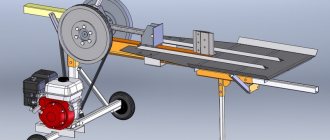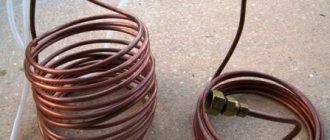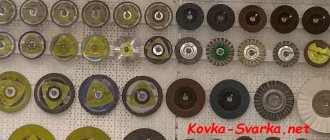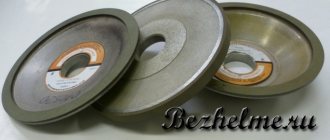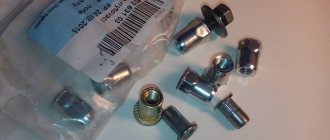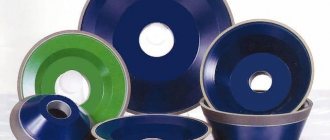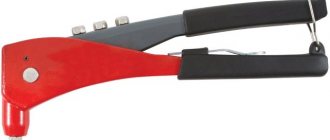Every experienced gardener and gardener knows that it is impossible to do without a garden sprayer. With the onset of spring, fruit trees, berry bushes and vegetable beds are attacked by dozens of insect pests. Plants are also susceptible to all kinds of infectious and fungal diseases.
You can save the harvest and help the plants only by carefully treating the stems and leaves. In this case, the preparations should be sprayed in a sufficiently dense stream. This saves the budget and at the same time is quite effective processing. The sprayer is also useful for applying root fertilizers to the soil.
Sprayer design
The most common and reliable are manual sprayers. They are easy to use, reliable and affordable for any summer resident.
The sprayer is a container made of plastic and equipped with a lid with a pump for pressurizing. The pump sprays liquid through the sprayer nozzles when the handle is pressed - the valve opens. There is also an air release valve and a fluid control scale. All models have nozzles protected by filters to prevent clogging. After use, the tank must be washed with water - the remaining working solution can crystallize and clog the narrow holes of the nozzle and filter cells.
The classic sprayer is a compact device with a capacity of 0.5 to 2 liters. It has a side handle - it is convenient to hold the device with one hand, and a small spout for spraying. Pressure is built up by a pump on the lid. Spraying occurs by pressing a button or lever on the handle. The nozzle easily regulates the water flow. You can install a fine spray or a powerful jet.
Injectors are often made of plastic. More expensive models have brass ones.
Possibility of self-production
You can buy a pump sprayer in specialized stores. There is also the opportunity to make the device yourself at home. The advantage of a home-made unit is that it is possible to save money, as well as create just such a model that will fully meet the user’s requirements.
Before starting work, it is recommended to prepare all the necessary materials and tools:
- plastic tank;
- automobile nipple and compressor;
- spray tip;
- hoses.
In order to make a sprayer with your own hands, it is recommended to follow the following sequence of actions:
- Drill holes in the plastic tank.
- Insert the car nipple into them.
- Connect the compressor.
- Seal all openings using special sealant.
You should also pay attention to the use of PVC hoses. This will ensure that the liquid can be sprayed effectively.
The presence of a pump sprayer in the household of every gardener increases the likelihood of getting a good harvest in the future.
Types of sprayers
For convenience when processing large areas, two main types of sprayers are available.
Pump-action
The pump type is a garden sprayer with a special strap for carrying on one shoulder. The capacity of such sprayers is from 3 to 12 liters. A pump is built into the cover, with
with the help of which pressure is pumped up to three or four atmospheres. A 1-1.5 meter long hose is attached to the bottom of the tank, which turns into a metal tube with nozzles at the end. At the top of the tube there is a handle and lever to activate the spray. For long-term operation there is a shutter button with which you can leave the sprayer on. This will take the stress off the hand and finger holding the power lever. When the pressure drops, it must be pumped up and work continued.
Advantages:
- ease of use;
- you can process up to 30 acres at a time;
- durability.
Flaws:
- quite high price (average price category - 30-35 dollars);
- large weight together with the filled working solution.
Backpack
The backpack type is a garden sprayer with two straps for carrying on the back.
An additional belt secures the device to your belt so you can lean forward without fear. Pressure builds up not in the tank, but directly in the pump chamber. Switching on is carried out by pressing the handle located on the side of the tank. The solution flows through a 1.5 meter long hose and a metal tube to the nozzles. Tank capacity from 12 to 20 liters.
It is possible to install the handle on both sides (for left-handed or right-handed people). Between the tank and the handle there must be a backing material (plastic part) to protect the tank from damage by the handle.
Advantages:
- you can process up to 50 acres in one refill;
- no need to stop to build up pressure;
- Some models have a repair kit.
Flaws:
- high price (average $50);
- constant pumping of pressure is required;
- The handle is not securely attached to the body.
Operating principle of the equipment
The popularity of manual garden pump sprayers among gardeners and gardeners is explained primarily by the simplicity of their design and the principle of their operation.
Briefly, the operating principle of these devices is as follows:
- Air is pumped into the liquid container until a certain pressure level is reached. This indicator is directly dependent on the device model;
- the operator presses the lever;
- the valve of the device opens;
- air is squeezed out of the nozzle along with the liquid;
- When the pressure level in the tank decreases, the operator needs to re-pump air into the tank.
This operating principle is typical for each device model, regardless of its type.
Model overview
Hozelock Pro 4810
The Hozelock Pro 4810 is made in the UK. This is a convenient pump-type sprayer with a ten-liter tank. Has seals that are resistant to acid and alkaline solutions. The maximum filling level of the tank is 8 liters.
Peculiarities:
- A nozzle with the ability to regulate the flow from a fine spray (cloud) to a jet. The spout is made of nickel-plated brass, the pump is metal.
- There is a lock button in spray mode.
- A release valve is provided to regulate the pressure.
- A telescopic tube (50-85 centimeters) provides convenient access to all parts of the plant.
- The belt can be attached in three ways - it can be worn on the shoulder, over the shoulder or on the back, which makes it easier to use the sprayer.
- The tank is transparent with a scale that allows you to easily control the amount of solution, and a wide neck.
- The kit includes a measuring container with a solution indicator (you can determine what was poured last - insecticide, fertilizer or herbicide), a cone for spraying herbicides and an integrated compartment for storing the tube and other parts of the device.
The average cost is 3,929 rubles (Moscow).
Reviews:
- Purchased last year. The sprayer is easy to use. The long tube allows you to keep your distance from chemicals (they are all classified as hazardous to humans).
- I was pleased with the transparent tank - everything is visible! The plastic tank of the old sprayer was colored, and the solution was almost invisible through it.
- High quality unit. The metal pump and nozzle are especially good. They provide a 5 year warranty. The price, of course, is considerable. But other models in this series have even higher prices. We pay for reliability.
"Lemira" OP-202-01
"Lemira" OP-202-01 is produced by a Ukrainian manufacturer from the city of Dnepropetrovsk. This is a budget pump-type sprayer with a ten-liter tank. The maximum tank filling level is eight liters.
Peculiarities:
- The sprayer has a flexible hose 1.3 meters long with a telescopic tube (0.75 -1 meter). The nozzle allows you to adjust the flow power from fine spray to jet. The belt can be worn on one shoulder.
- The sprayer is quite light, made of plastic - weighs 3 kilograms (without working solution).
- The lid has a pressure indicator with a valve for bleeding air.
- The device is declared by the manufacturer as universal, suitable for disinfestation, washing cars and windows.
The average cost is 722 rubles.
Reviews:
- Very light sprayer. Comfortable in using. The main thing is to check all connections before work so that the solution does not leak.
- The price of imported sprayers forced me to buy Lemira. Perhaps the European models are made better and will last longer, but the Ukrainian version of the sprayer turned out to be not so bad. One year warranty. You can buy spare parts without any problems. Everything is available.
- We found no shortcomings. The jet is easily adjustable. It hits almost two meters. We liked the fine spray, it covers the area better when processing. The price is very affordable!
The leaf moth is a small butterfly that feeds on the leaves of fruit trees, causing great damage to the garden. Moths are a numerous species of harmful insects that live both in the forest and in the garden. You can find out why these butterflies are harmful here.
Sweet clover is an excellent melliferous and forage plant that is loved by many pests. You can find out which ones by following the link.
Advantages and disadvantages
Each device has a number of disadvantages and positive aspects.
Pump sprayers have the disadvantage of constantly removing the device from the back to pump up pressure, while other models have the disadvantage of refueling.
Pros of sprayers:
- devices are made of materials that can withstand high temperatures, which allows the use of hot preparations;
- ease of the refueling process;
- adjusting the liquid ejection jet;
- ease of carrying and using equipment;
- ease of repair;
- use in areas of various sizes;
- efficiency and functionality of the devices.
Tips for choosing a sprayer
The main thing in any sprayer is the tank capacity.
To choose the right one, you need to focus on the following indicators:
- to process 10 square meters of beds you will need one or two liters of working solution; a young tree needs two to three liters;
- a large tree is sprayed with ten liters of solution.
For a small flowerbed or bed, a 2-liter model is suitable, and for gardening you can’t do without a more capacious sprayer with a capacity of ten to twelve liters.
- The transparency of the tank and the presence of a graduated scale are a mandatory attribute of a quality device.
- The weight of an empty 10 liter sprayer is on average three kilograms. For processing small beds, compact models for carrying on the shoulder with a maximum capacity of 6 liters are suitable.
- The design is taken into account depending on the physical data and processing area. The backpack type requires constant pressure pumping, which is tiring for the hands. It is more convenient to carry such a sprayer, and the tank capacity will allow you to treat a large tree or 50 acres of vegetable garden. The pump type is not so comfortable to wear - one shoulder is involved, and it can cover an area of 20 hundredths, but it is lighter and can be removed fairly quickly.
- The optimal length of the tube (rod) is 1-1.5 meters. The telescopic design makes it easy to store and carry the sprayer.
- When purchasing, you must carefully check the package (including spare parts) and inspect the sprayer. All components must be made with high quality. This is especially true for the safety valve and pump.
How to choose and use?
Before purchasing equipment, you need to decide on the volume of the sprayer tank and the type of work to be performed.
Given these factors, there are a number of characteristics to consider.
- The volume of the tank must correspond to the area of the treated area in one go. Tanks up to 14 liters are used in areas up to 15 acres, up to 25 liters - when processing farms and large plots, 2-5 liters - for small areas or surfaces.
- The material from which the pump is made. The metal model is more reliable than the plastic one, but is susceptible to corrosion. The average service life of any pump is from 5 to 10 years.
- The material from which the nozzle is made. They also come in plastic and metal.
- Spray. The main criterion is the length of the fishing rod; when processing hard-to-reach places or tall trees, it is advisable to purchase a sprayer with a telescopic fishing rod.
- The presence of a valve to release excess pressure.
- It is desirable that the plastic from which the reservoir is made is translucent or translucent to determine the amount of liquid. An additional advantage will be the presence of a measuring scale.
- The quality and condition of shoulder straps and their fastenings.
- Availability of a sufficient number of spare parts for this sprayer in case of breakdowns.
- Popularity of the brand.
- Instructions.
How to do it yourself?
Making a homemade sprayer is simple if you have a diagram.
An important part of any type of device is the reservoir. A tank, plastic container, can can be used as a container.
For a hand sprayer, you should use a compressor, a hose and any type of sprayer, you can take it from a spray gun.
For battery and motor you will need a vibration pump, a compressor, a pump sprayer, a hose, an adapter and a push-button switch or lever.
The beginning of the assembly of any unit begins with drilling a hole in the selected tank and connecting the compressor using a nipple. All joints and fixations must be treated with sealant.
When assembling battery and other sprayers, a pump is placed inside the structure; the length of the tube should be to the very bottom. Holes are formed in the cover for the outlet of the hose, cable and for air intake. The hose is connected to the sprayer, on which the power button is installed. All cables supplying the pump are disconnected and routed outside the tank.
How to repair?
If the sprayer does not work, before starting repairs, you should carefully inspect the device and identify the cause of the breakdown.
The following items are most often damaged:
In case of mechanical damage to the tank or hose, it is enough to treat the cracked area with sealant. A temporary patch can be installed on rubber hoses using a piece of rubber and special glue. But it is still recommended to replace the hoses with new ones.
Elements of the internal parts of the device corroded by chemicals are fully or partially replaced with new ones and cannot be repaired.
A clogged injector can be corrected by manual cleaning, blowing out the part and outlet tubes.
For any type of sprayer repair involving the use of chemicals and fertilizers, safety precautions must be observed!
The remaining liquid must not come into contact with the skin, mucous membranes, or eyes. You should wear gloves when repairing equipment, even if the unit has been thoroughly washed.

